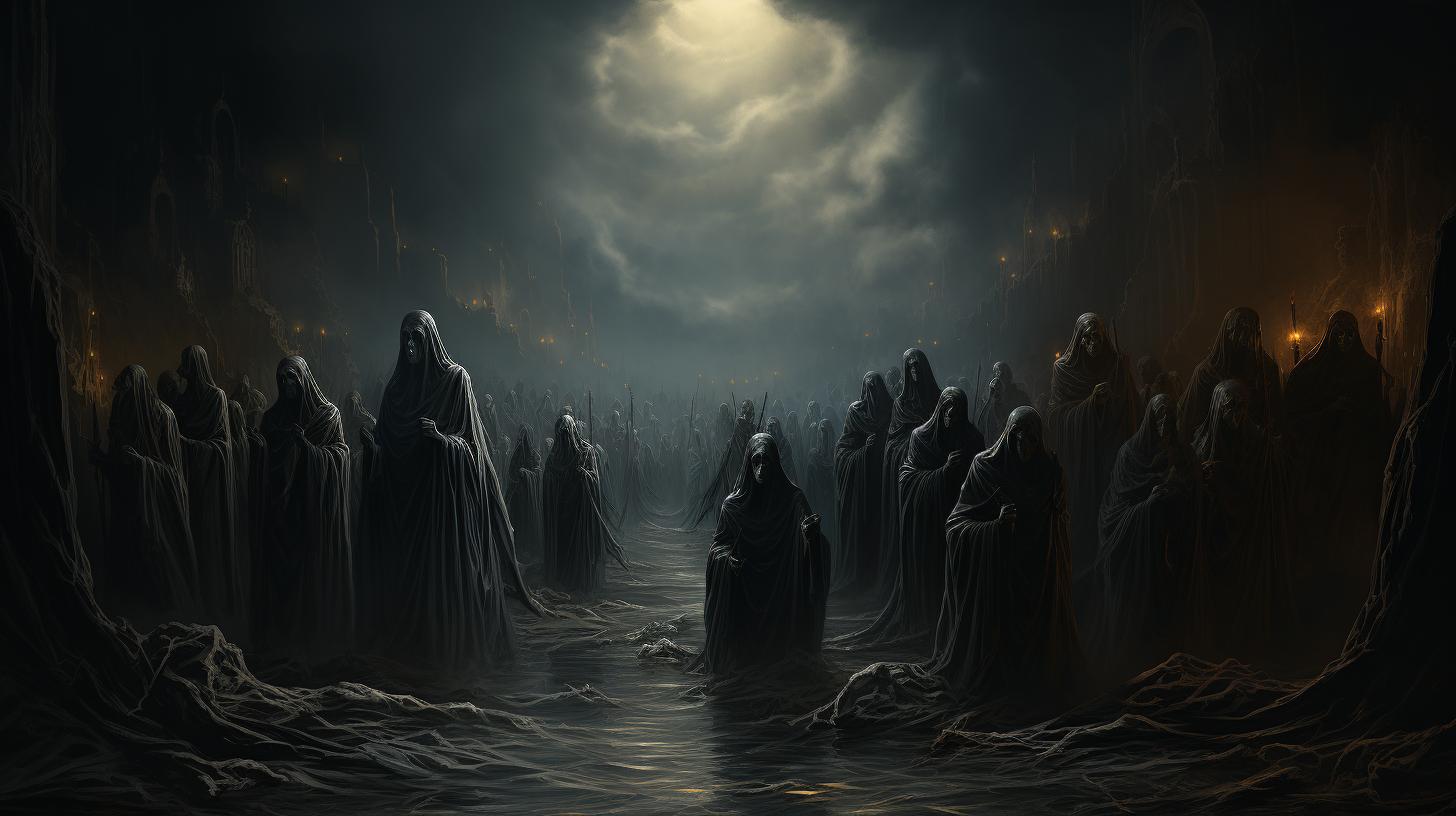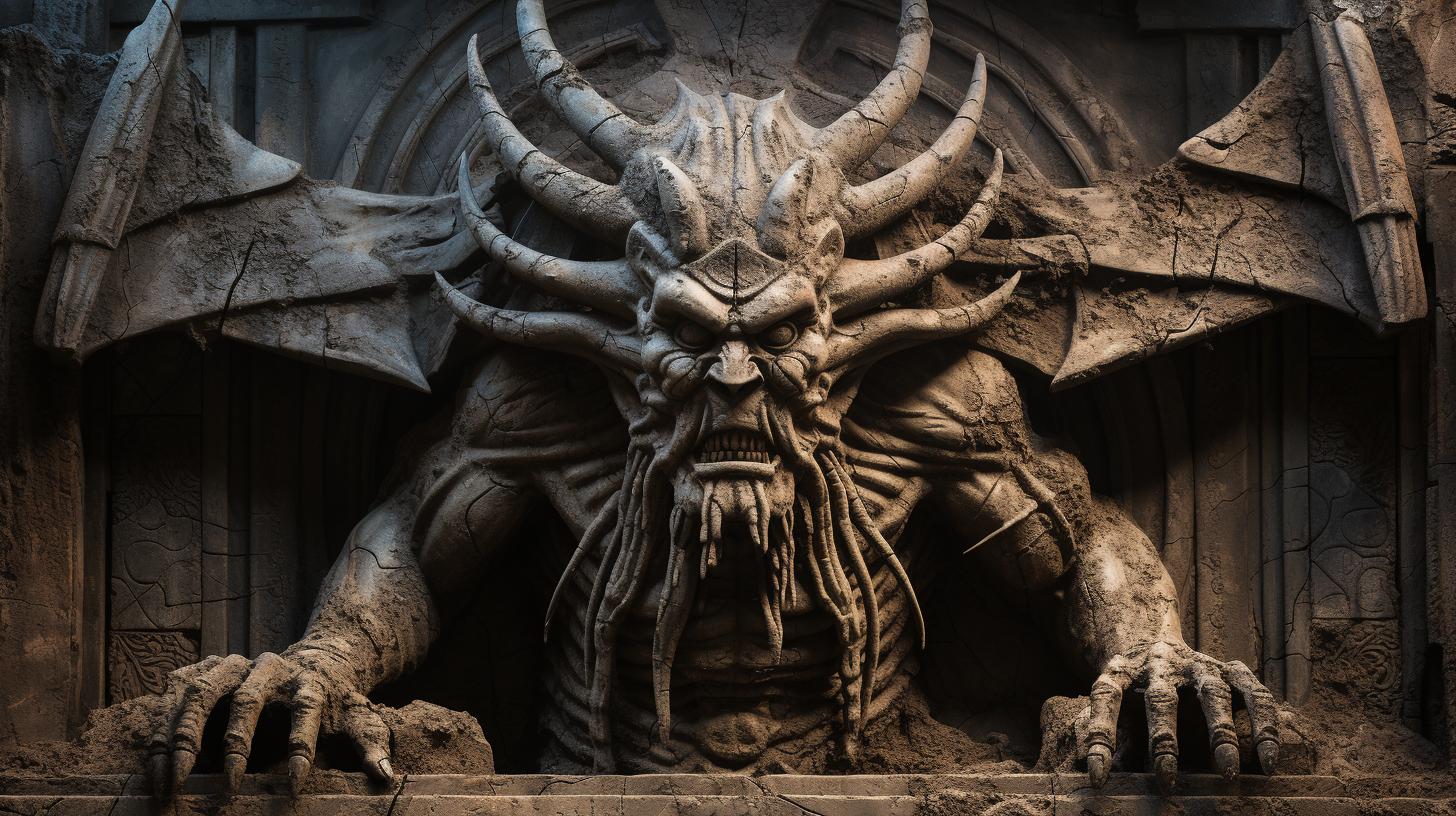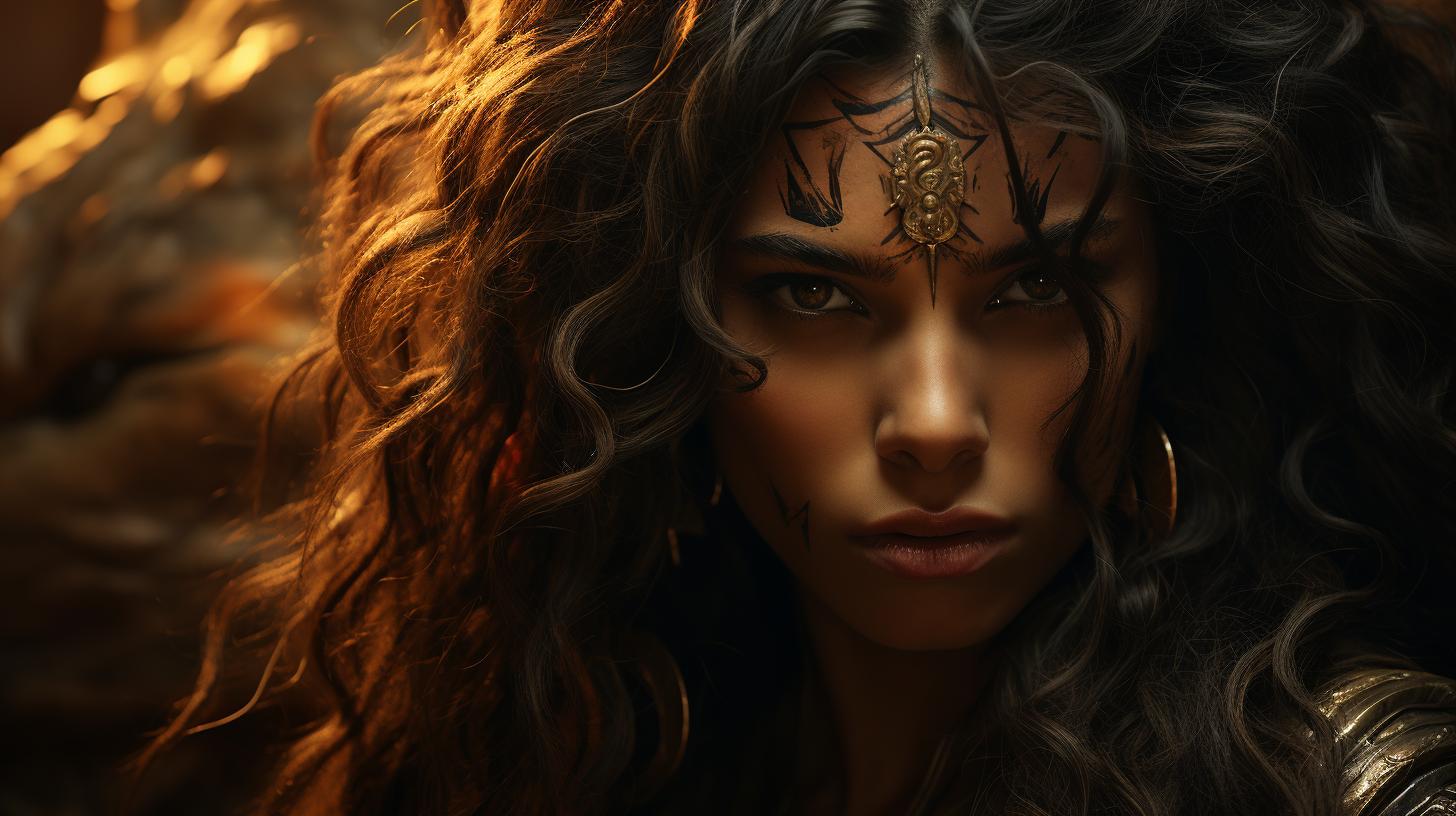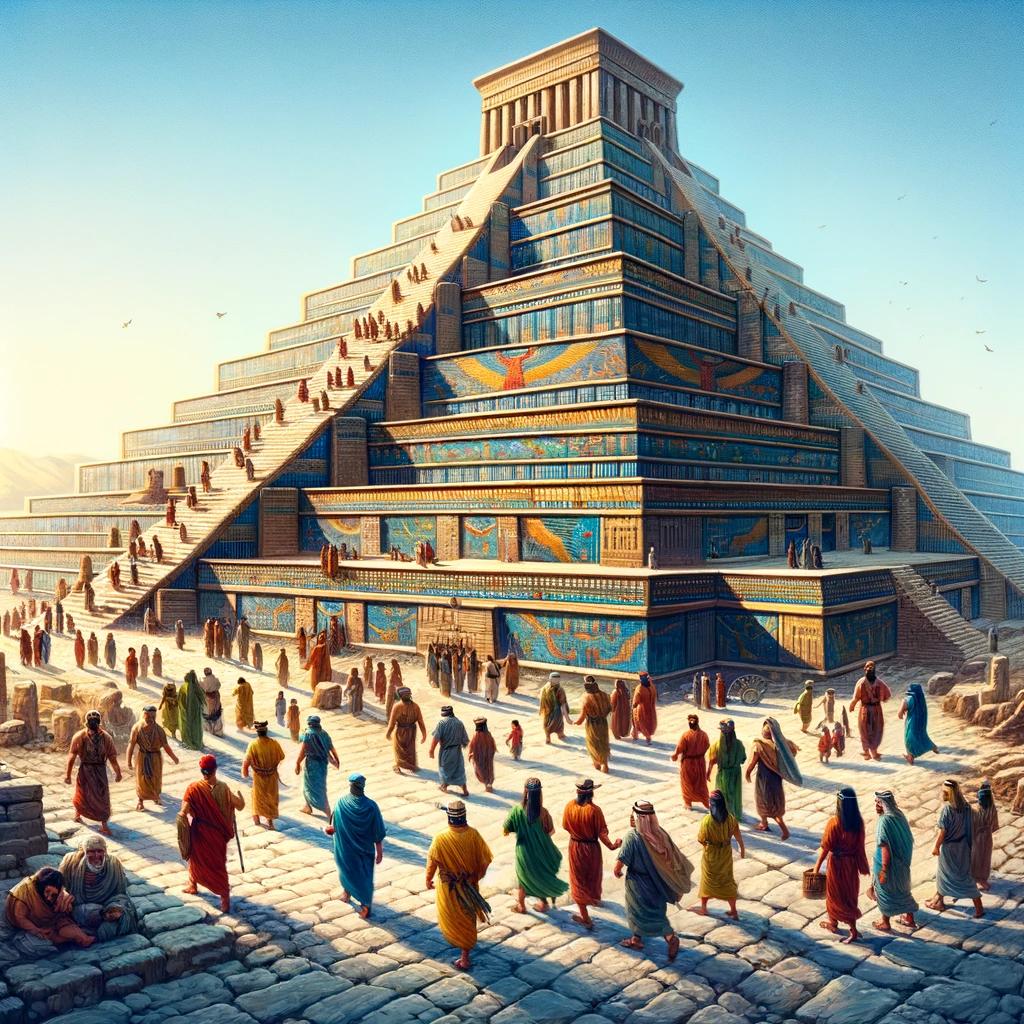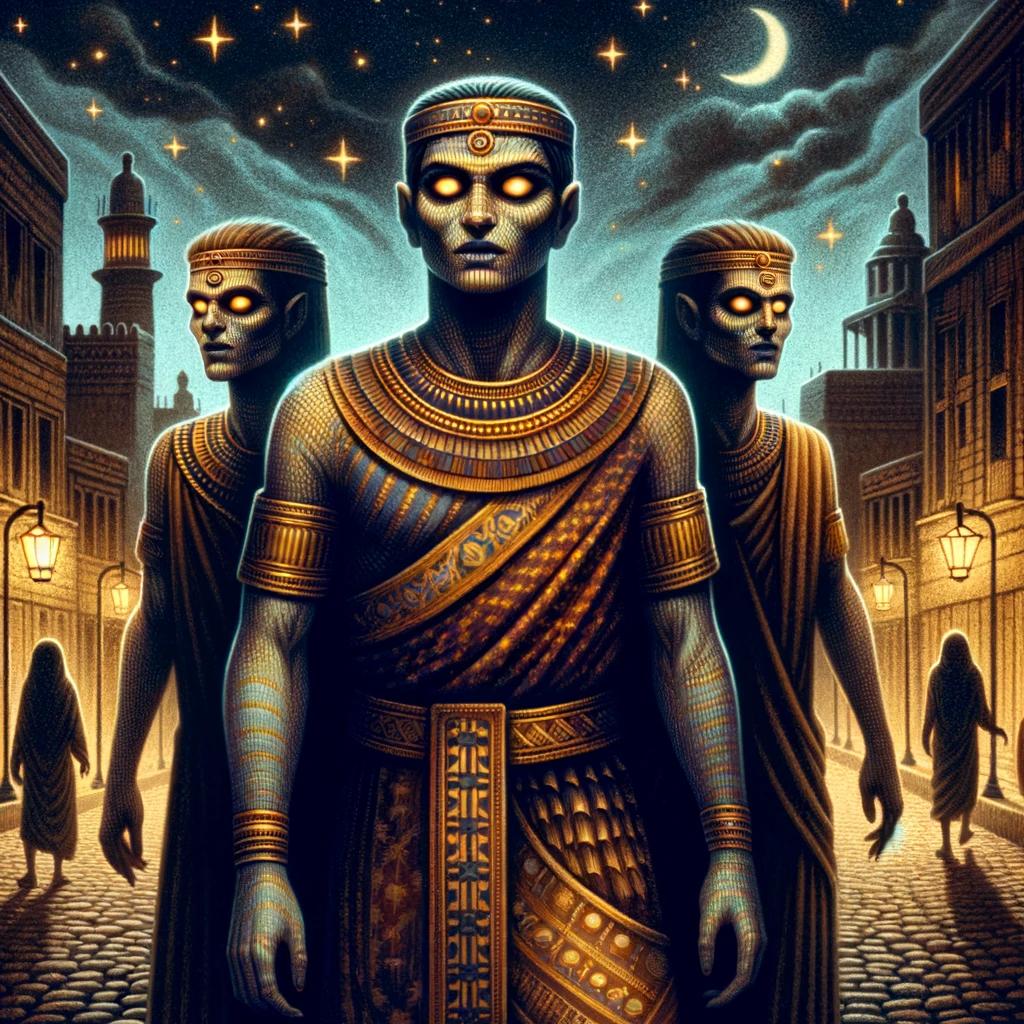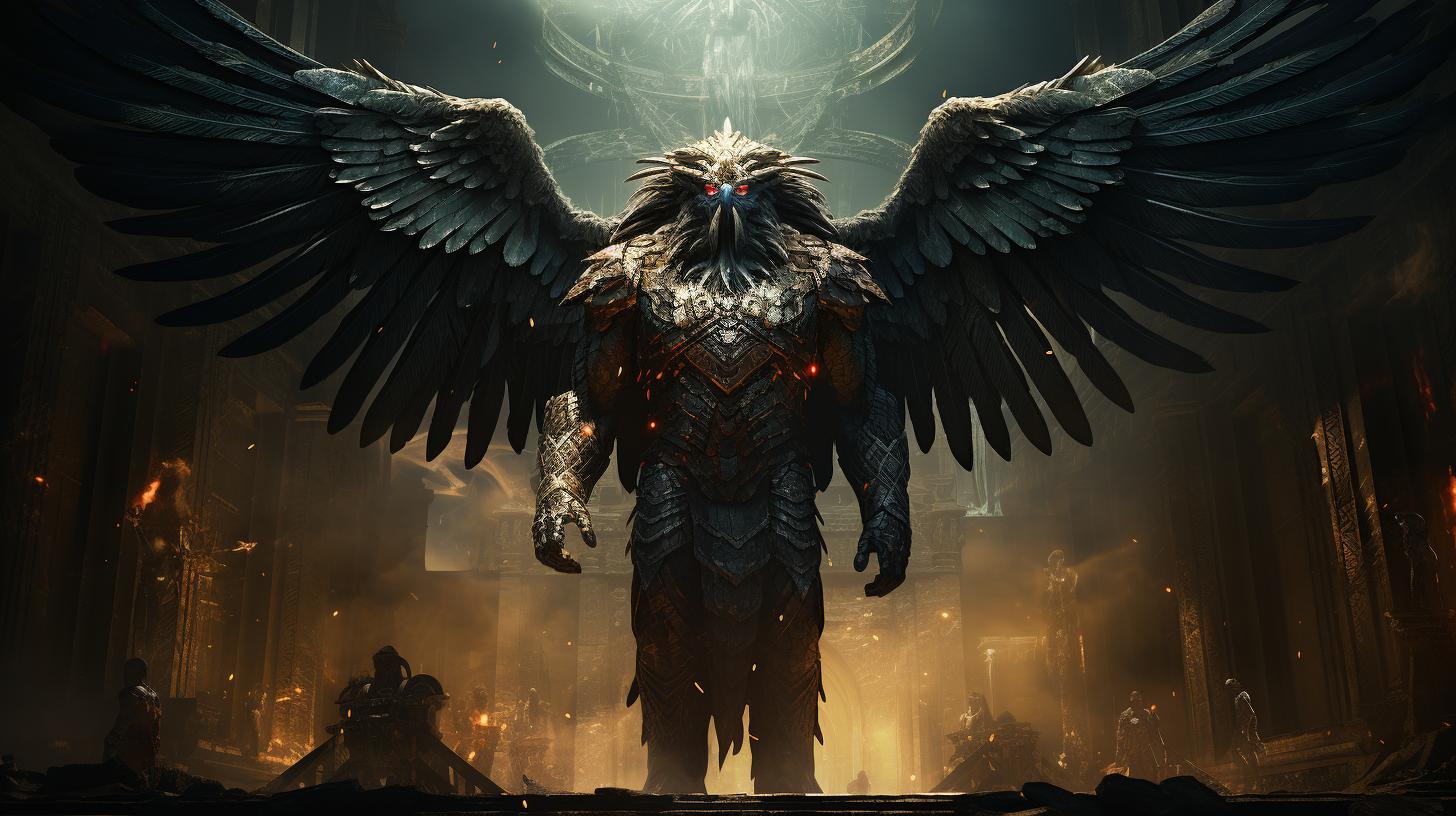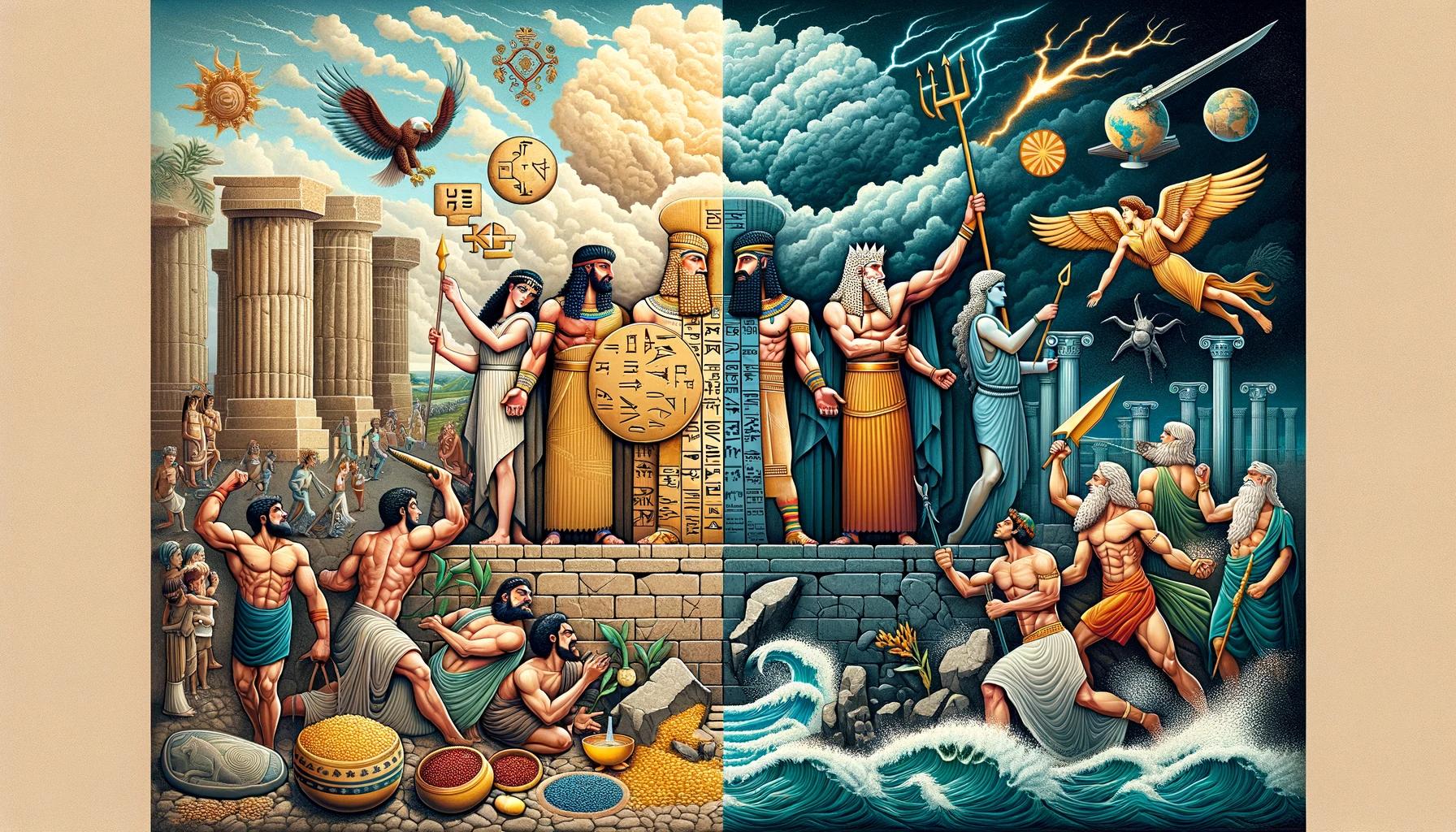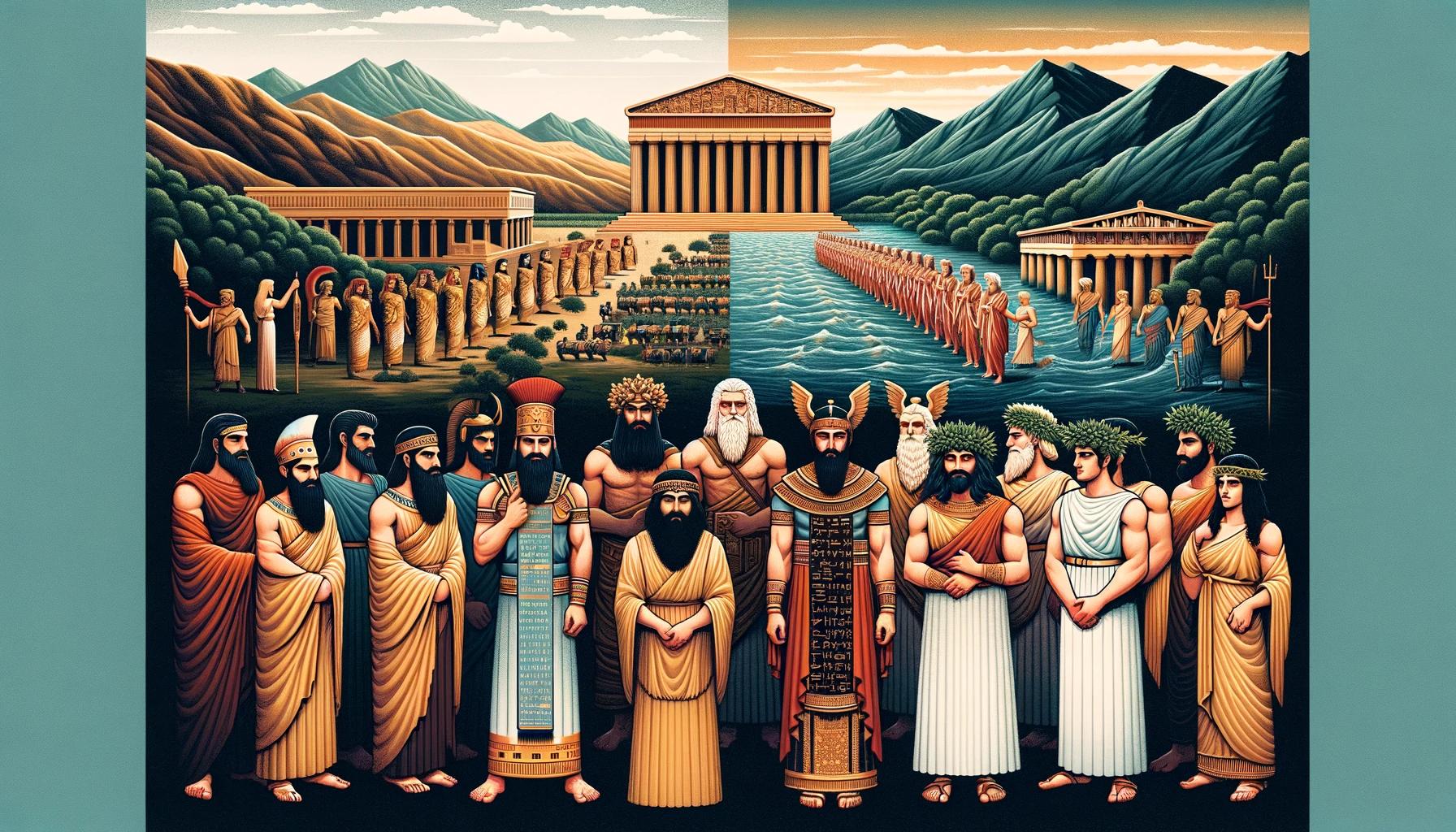Edimmu Mythology: The Vengeful Spirits of Ancient Sumeria
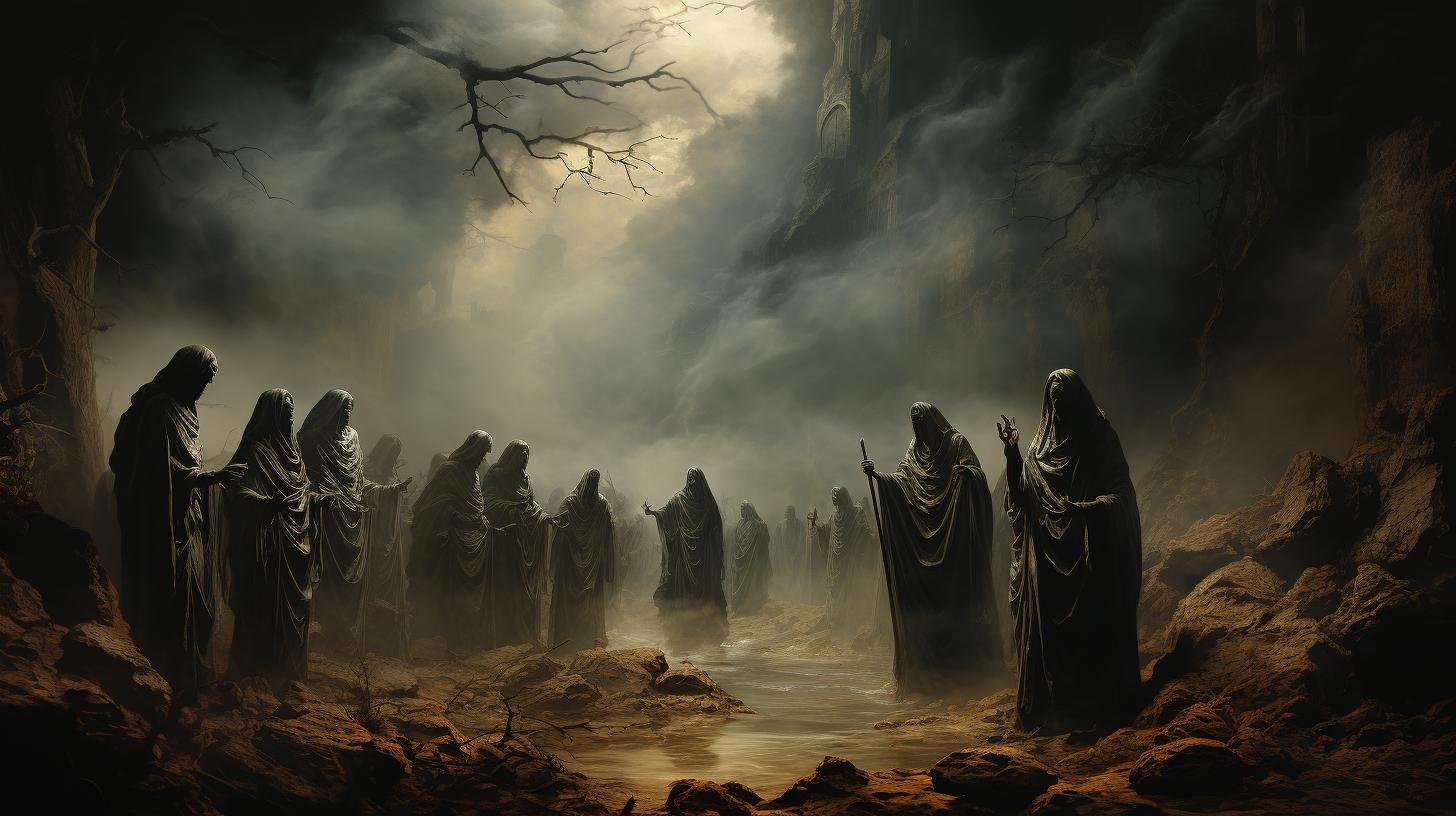
Edimmu mythology is a fascinating aspect of ancient Mesopotamian beliefs. In Sumerian mythology, Edimmu were vengeful spirits that emerged from improper burials, causing diseases and criminal behavior. In Akkadian and Babylonian mythology, they were seen as demonic spirits with the power to possess and harm individuals, especially children.
Rituals and offerings were performed to pacify these malevolent entities. Throughout history, the representation of Edimmu has evolved, leaving their mark on modern literature, popular culture, and contemporary myths. Understanding the role of Edimmu provides insights into ancient religious practices and their legacy in today’s society.
Edimmu in Sumerian Mythology
The mythology of ancient Sumeria is rich with tales of supernatural beings, and among them, the Edimmu hold a significant place. These vengeful spirits were believed to play a crucial role in the Sumerian afterlife and were associated with the consequences of improper burial practices.
Let’s delve into the various aspects of Edimmu in Sumerian mythology, including their role as vengeful spirits, the beliefs and taboos associated with them, and their influence on disease and criminal behavior.
Role of Edimmu as Vengeful Spirits
In Sumerian mythology, Edimmu were regarded as spirits that emerged from the improper burial of individuals. They were considered restless and vengeful, seeking retribution for their mistreatment. These malevolent entities were believed to haunt the living, causing harm and misfortune.
The Edimmu’s main purpose was to avenge their own unjust treatment, making them feared and respected in Sumerian society.
Beliefs and Taboos Associated with Edimmu
Sumerians held strong beliefs and taboos regarding Edimmu. It was believed that these spirits possessed the ability to inflict harm upon those who did not follow certain rules and restrictions.
In particular, the consumption of oxen meat was forbidden, as it was believed to anger and attract the wrath of the Edimmu. These taboos served as a way to avoid the wrath of these vengeful spirits and maintain the balance between the living and the dead.
Edimmu’s Influence on Disease and Criminal Behavior
According to Sumerian mythology, Edimmu had the power to influence diseases and criminal behavior among the living. It was believed that they could possess individuals who did not adhere to the specified taboos and incite them to commit acts of violence and wrongdoing.
Diseases were often attributed to the wrath of the Edimmu, who were said to extract the life force of their victims while they slept, particularly targeting young and vulnerable individuals. These malevolent spirits were seen as a force to be reckoned with, capable of disrupting social order and wreaking havoc on society.
Edimmu in Akkadian and Babylonian Mythology
The Edimmu in Akkadian and Babylonian mythology shares similarities with the Utukku and other demonic spirits. These malevolent beings were believed to possess individuals and cause harm and suffering. Unlike the Utukku, which were associated with specific occupations, the Edimmu were known for their ability to consume and manipulate life force, as well as their connection to blood consumption.
Comparison to Utukku and Other Demonic Spirits
The Edimmu were closely related to the Utukku, another type of demonic spirit in Mesopotamian mythology. While both entities shared the ability to possess humans and inflict harm, the Edimmu were considered more dangerous, particularly to children and sleepers.
Their relentless pursuit of life force and their insatiable thirst for blood set them apart from the other demonic spirits in Akkadian and Babylonian mythology.
Manifestations and Abilities of Edimmu
The Edimmu were described as ethereal beings, often appearing as shadows or invisible entities. However, they could manifest in corporeal forms, resembling walking corpses or winged demons. These manifestations instilled fear and dread in those who encountered them.
The Edimmu possessed the power to drain the life force of their victims, especially the young and vulnerable, while also influencing individuals to engage in criminal acts. These abilities made them formidable and feared entities in Mesopotamian folklore.
Edimmu’s Connection to Blood Consumption
One unique aspect of the Edimmu mythology was their association with blood consumption. These supernatural beings were believed to feed on the vital essence of humans, including their blood. The Edimmu’s insatiable thirst for blood set them apart from other spirits and demons.
Their connection to blood consumption reinforced their malicious nature and their role as beings of destruction and chaos.
This exploration of Edimmu in Akkadian and Babylonian mythology sheds light on their similarities and differences with other demonic entities, their manifestations and abilities, and their unique connection to blood consumption.
Understanding the beliefs surrounding these malevolent spirits provides insight into the worldview and religious practices of ancient Mesopotamian civilizations.
Rituals and Practices to Pacify Edimmu
Rituals and practices played a crucial role in pacifying the vengeful spirits known as Edimmu in ancient Mesopotamian culture. These rituals aimed to establish a connection with the spiritual realm and ensure peace for both the living and the deceased.
Funerary Banquets and Offerings for Edimmu
Funerary banquets and offerings were central to appeasing the wrath of Edimmu. These banquets were elaborate ceremonies held in honor of the deceased, where a variety of food and drink were prepared and offered to the spirits.
The belief was that by providing sustenance to the Edimmu, their hunger and anger would be appeased, mitigating their malevolent influence on the living.
Role of Rituals in Ensuring Peace for Spirits
Rituals served as a means to establish harmony between the realm of the living and the realm of the spirits.
They were performed to ensure that the deceased found rest and to prevent their return as vengeful Edimmu. By following the prescribed rituals, it was believed that the spirits would find solace and maintain a peaceful existence in the afterlife.
Dealing with Edimmu and Protecting Against Possession
Recognizing the danger posed by Edimmu, people also employed protective measures to guard against possession. Amulets and talismans were used to ward off malevolent spirits, providing a sense of security and protection.
Additionally, certain rituals involving chants, prayers, and purifications were performed to cleanse individuals and spaces, ensuring that they remained immune to the influence of these vengeful spirits.
Evolution of Edimmu Representation in Modern Culture
The concept of Edimmu has captivated the imagination of artists, writers, and filmmakers, leading to their inclusion in various forms of modern culture.
This section explores the different ways Edimmu have been depicted and their impact on literature, popular culture, and contemporary mythology.
Edimmu in Literature and Modern Fiction
- Edimmu mythology has found its way into the pages of numerous literary works, where these vengeful spirits become captivating characters of intrigue and terror.
- Authors have skillfully woven elements of Edimmu mythology into their narratives, creating atmospheric settings and spine-chilling encounters with these malevolent entities.
- From horror novels to fantasy sagas, Edimmu have become iconic figures, deeply rooted in the minds of readers and fueling their fascination with the supernatural.
Edimmu in Popular Culture and Media
- The influence of Edimmu mythology extends beyond the realm of literature, permeating popular culture and media.
- In movies, Edimmu have been portrayed as terrifying creatures lurking in the shadows, ready to strike fear into the hearts of unsuspecting victims.
- Television shows and video games have also embraced the mystique of Edimmu, incorporating them as formidable adversaries and haunting adversaries.
- Artwork and illustrations inspired by Edimmu mythology can be found in galleries and online platforms, showcasing the creativity and fascination surrounding these ancient spirits.
Influence of Edimmu on Contemporary Mythology
- Edimmu’s enduring presence in modern culture has also left its mark on contemporary mythology.
- As these legendary beings continue to capture the collective imagination, they become ingrained in the fabric of urban legends, folklore, and supernatural beliefs.
- Urban legends and ghost stories often feature sinister spirits reminiscent of Edimmu, perpetuating the fear and fascination associated with their ancient origins.
- The influence of Edimmu on contemporary mythology serves as a testament to the enduring power of ancient legends in shaping our beliefs and storytelling traditions.
Edimmu held a significant role in the religious beliefs of ancient Mesopotamia.
They were considered as vengeful spirits, associated with improper burials and the disruption of the natural order. According to Sumerian mythology, the Edimmu were believed to be restless and could cause havoc in the lives of the living if not appeased.
Their existence reflected the importance of proper burial rituals and the belief in an afterlife.
Legacy and Relevance of Edimmu in Today’s Society
Although ancient Mesopotamian civilization has long passed, the legacy and relevance of Edimmu mythology can still be seen in today’s society. While not widely recognized or believed in a literal sense, Edimmu’s influence can be found in various forms.
The themes of restless spirits, the consequences of improper burials, and the need for rituals to ensure peace still resonate in modern notions of the supernatural and the importance of funerary customs.
Edimmu’s portrayal in modern literature, fiction, and popular culture further showcases its lasting impact. These vengeful spirits have become a source of inspiration for paranormal stories, horror novels, and movies, tapping into the fascination with the otherworldly and the macabre.
Influence on Supernatural Narratives
- The concepts of restless spirits seeking revenge or causing harm are prevalent in modern supernatural narratives.
- Edimmu’s characteristics, such as their ability to possess individuals and their association with diseases, have been incorporated into various fictional works.
- These tales often explore the consequences of disregarding ancient customs and the importance of maintaining respect for the spirits.
Impact on Pop Culture and Media
- Edimmu’s imagery and symbolism can be found in contemporary art, music, and film, adding a touch of ancient mysticism to modern creations.
- Their menacing nature and ability to seduce, coupled with their association with blood consumption and destruction, have made them captivating subjects for horror movies and dark fantasy genres.
- Additionally, video games and role-playing games often draw inspiration from Edimmu mythology, integrating their characteristics into captivating narratives.
Overall, while the belief in Edimmu may have diminished over time, their legacy persists in the realms of mythology, folklore, and popular culture, demonstrating the enduring influence of ancient Mesopotamian beliefs on our modern imaginations.
.

